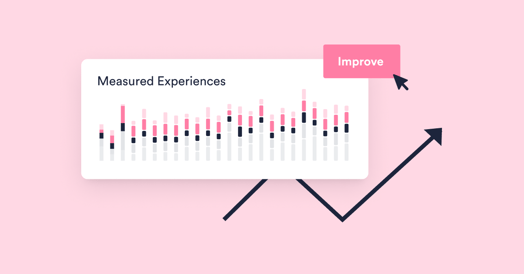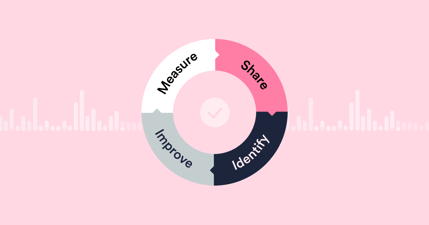Companies everywhere are looking to IT to increase speed, minimize costs, and better partner with lines of business to deliver better experiences and more value to their customers. These desires have been with us for years, but the amount of dependence on technology has increased. Technology enables businesses to deliver goods and services more quickly and efficiently to meet customer demand, coming increasingly through digital channels.
The Why of Experience
In order to have the capability to meet customers where they are, companies need to provide their employees with appropriate tools that can be effectively managed and supported. ITIL4 tells us, “Start where you are,” but in today’s landscape of IT, exactly where we are may be difficult to figure out.
By gathering experience data from IT’s end-users, IT can see where the pain points and areas of friction are as services flow across the organization. What is slowing people down? What is working well in the realm of IT, and what isn’t? Which applications and services are holding up work, breaking down, and frustrating end-users? Most importantly, what can IT do to improve?
One area that comes up again and again in conversations with our customers is that IT appears to be meeting its obligations as set out in service level agreements (SLAs), and yet end-users and department heads say they’re unhappy.
“Over time, SLAs drive behaviors that are focused on delivering a minimum level of service at minimum cost to the provider. This forces IT organizations to become a commodity and not a strategic, value-added partner to the business,” wrote Peter Bendor-Samuel on CIO.com.
What if the approach changed completely, and IT sought guidance from the people it delivers services to? Instead of seeking to meet minimum standards, can IT learn to meet and/or exceed end-user expectations?
Whether it’s defined as a department or as an organizational capability, IT doesn’t exist for its own sake but is there to create and maintain the systems that make it possible to conduct business in an increasingly digitized world. Obstructions, points of failure, and delays can be exposed if we follow the maxim, “Ask the people who do the work.”
It’s not enough to provide satisfaction surveys after an interaction with the IT service desk. Past research has shown that only two-thirds of end-users contact support for assistance, that only a small percentage of users respond, and that asking them for a simple rating for one interaction does nothing to improve the overall IT environment. For many of the persistent issues that impact the ability of employees to accomplish their work, there isn’t a specific incident or problem that is reported to IT, so it doesn’t even make it onto the radar for improvement.
On the other hand, if we provide ways for users to give us feedback on multiple aspects of their interactions with IT, we can get very specific data about what we need to improve and which improvements will have the most impact on their workday. One of our customers told us that they discovered—during their increasing focus on IT end-user experience—that a common irritant across multiple company locations was the inadequacy of their file-sharing systems. File-sharing hadn’t failed in the technical sense but was failing in its task of providing a good way for employees to accomplish work and exchange information. The result was that IT moved the company from its legacy file-sharing system to SharePoint, resulting in a better experience for the users.
The How of Improvement
It’s not enough to gather end-user experience data; you’ll need to begin by deciding how you can act on it. Without action on the information they provide, end-users will not build trust with IT, and will likely become less willing to share information in the first place.
Some things to keep in mind:
- Negative feedback is a gift. Learn from it. (See the above customer story on file-sharing.)
- It’s a given that you’ll not be able to act on every issue or suggestion, but you should listen, learn, and communicate.
- Improvement doesn’t have to happen all at once. Pilot programs are an excellent way to see if the projected improvement will work while at the same time mitigating the risks of major changes.
- Make a change, then assess whether it has had the desired effect before proceeding. In other words, “Progress iteratively with feedback,” as the ITIL Guiding Principles and the DevOps Third Way suggest.
- Understand that improvements don’t have to be technical. Sometimes it’ll become evident that end-users aren’t getting the most out of a toolset because they’ve never been trained on it. Your improvement may be finding a good way to provide that training or adding simple aids like hovertext, also called mouseover text, to explain or describe something users are struggling with.
If you’re willing to listen and to act, end-users will be willing to let you know precisely where improvement is needed. Having that valuable information can improve IT’s relationship with business colleagues as well as move the organization toward the digital future.
If you'd like to learn more about using experience data to drive continual improvement, please check out our latest webinar (available on demand) from industry authority Roy Atkinson: Creating the Business Case for EX-driven Improvement.




